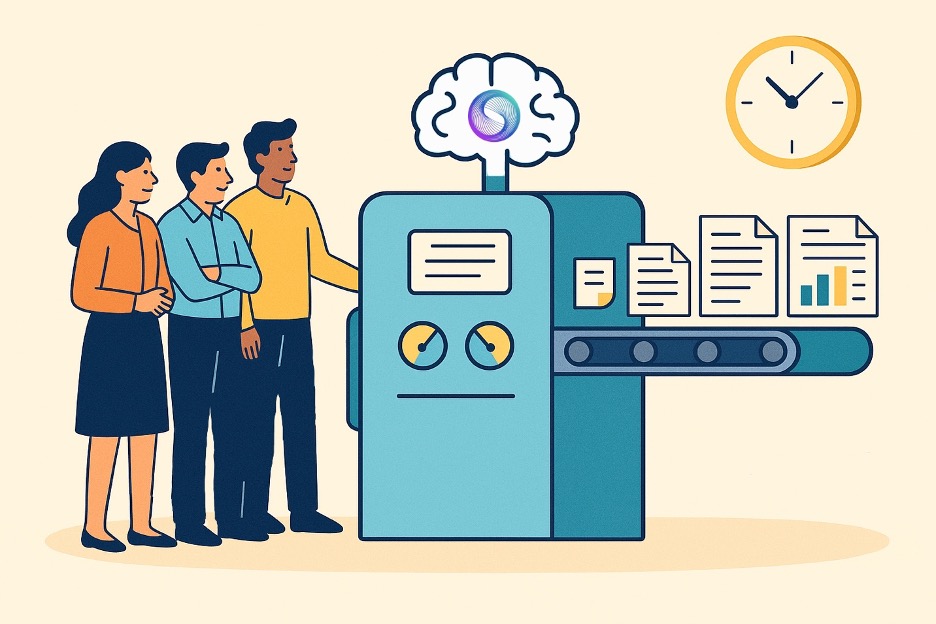From Weeks to Minutes: The Grant Writing Revolution
For many nonprofits, grant writing is a necessary bottleneck. Each proposal must be deeply personalized, perfectly written, and data-rich. The stakes are high, and the labor is intense. A single funding proposal can take weeks to craft, often requiring coordination across departments, careful storytelling, and rigorous data compilation.
But AI is changing the equation.
Modern AI-powered tools like OrgBrain’s Draft Proposal skill now allow nonprofits to generate a strong first draft in minutes, not weeks. Instead of starting from scratch, development teams can feed in key data points and let the AI structure, narrate, and refine the narrative. According to a report by Vee Technologies, nonprofits using AI tools have reduced their grant writing time by 50 to 60%. Another survey by Instrumentl found that 71% of grant professionals were able to complete proposals in under a week with AI support, down from the typical two-week timeline.
This kind of time-saving doesn’t just improve efficiency. It boosts opportunity. With AI assistance, nonprofit teams can submit more proposals, chase more funding, and increase their chances of success—all without adding pressure to already stretched staff.
Saving Money and Staff Effort
Time is money, and in the nonprofit world, both are scarce. The average cost of hiring a freelance grant writer ranges from $2,000 to $5,000 per proposal, according to Vee Technologies. For many mission-driven organizations, especially smaller ones, that’s simply unsustainable.
Enter AI platforms like OrgBrain. For a fraction of the cost——
Even more valuable is the time reclaimed. If a single proposal traditionally takes 50+ staff hours, cutting that time in half means more energy can go into what really matters: building relationships with donors, running programs, or engaging communities. AI does the heavy lifting, so human teams can stay focused on the mission.
Beyond Proposals: AI Across the Organization
While grant writing is the poster child for nonprofit AI adoption, it’s just the beginning.
OrgBrain and similar tools can help nonprofits summarize field reports or monitoring and evaluation (M&E) data into clear donor-ready updates. They can generate newsletters, press releases, and social media content. Need a training manual for new volunteers? AI can draft it. Want to translate impact stories for a multilingual audience? AI can handle that too.
Imagine asking, “Summarize survey data from five community projects into a one-page board report,” and having it done in five minutes. These tasks, once painstaking and repetitive, are transformed into fast, accurate outputs. That’s the promise of AI in nonprofit operations: more done, better, and faster.
Keeping the Human Touch: Trust and Quality Matter
Nonprofits don’t just need speed—they need to maintain integrity, voice, and data privacy. That’s why AI must augment, not replace, human judgment.
With OrgBrain, the AI drafts a grant, but the development director still brings the soul. AI checks for consistency and backs up claims using the nonprofit’s own knowledge base. That kind of built-in accountability impresses funders and helps avoid errors or exaggerations.
Just as important is security. Public AI tools pose risks when it comes to sensitive data. A secure, private AI platform ensures donor lists, beneficiary data, and internal research stay protected. This isn’t just about compliance. It’s about maintaining trust with the communities served and the people who support them.
Leveling the Playing Field
Here’s the bigger picture: AI is democratizing capacity.
Historically, only well-funded nonprofits had the resources to hire expert grant writers or conduct in-depth program analysis. Now, with AI, even mid-sized organizations can operate with the sophistication of a major NGO. According to Instrumentl, over 90% of nonprofits with $2–10 million in grant funding are already using AI tools in some form (source).
This is not a future trend. It’s already here.
Nonprofits that lean into AI aren’t just keeping up—they’re getting ahead. They’re winning more grants, avoiding burnout, and spending more time where it counts: serving their mission.
Those that don’t? They risk falling behind.
Takeaway
AI isn’t just a tech trend. For nonprofits, it’s a force multiplier. It turns hours into minutes, dollars into impact, and stress into strategy. The future of social impact work is not just human. It’s human plus AI.


